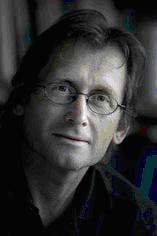prof. dr. B.L. (Ben L.) Feringa

Research interests
The research program of the Feringa group is focussed on synthetic organic chemistry. Over the years a unique expertise in stereochemistry has been acquired. Inspired by nature's principles of molecular assembly, recognition, transport, motion and catalysis, the goal is to exploit the full potential of synthetic chemistry to create new structures and functions. A major part of the research is directed towards nanotechnology and novel functional materials, such as molecular switches and motors. A second part of the program deals with the development (and application in chemical biology) of novel stereoselective synthesis methods and asymmetric catalysis. Control of chirality is the guiding principle in both programs.
Scientific program of the Feringa groupfrom molecules to molecular systems
The mission of the research programme in the Feringa group is to exploit the full potential of synthetic chemistry to create new structures, functions and chemical systems. Inspired by Nature's principles of molecular recognition, assembly, catalysis, transport and motion, the goal is to design novel functional (supra-) molecular materials as well as to develop new catalysts and synthetic methodology.
Three major areas of interest can be distinguished:
Molecular Nanoscience: with particular emphasis on the control
of dynamics including switches, translational and rotary molecular
motors, self-assembly and multifunctional nanosystems (read
more).
Synthesis and catalysis: which a focus on the development of
asymmetric catalysis, catalytic oxidation and coupling reactions
and application of novel catalytic methods in synthesis (read
more).
Biohybrid systems: the design of responsive biohybrid
materials, artificial membranes, photopharmacology and methodology
for biomolecular imaging (read
more).
Chirality is a leading theme and over the years a broad expertise in fundamental aspects of chirality has been built including new asymmetric synthesis methodology, chiroptical phenomena, chiral amplification, and dynamic and supramolecular chirality. The research in the group has a strong multidisciplinary character.
Research programs
Subprogram 1: Molecular Nanoscience (Center for Systems Chemistry, Gravity program functional molecular systems and top research school Zernike Institute for Advanced Materials). The focus is currently on four major challenges e.g.:
- Molecular switching: to trigger or address in a fully reversible manner a variety of functions. The projects range from the design of systems for molecular information storage and molecular electronics to responsive (smart) surfaces (read more).
- Molecular organization: how to control and reversibly change assembly and organization at different hierarchical levels, in supramolecular materials and self-assembled monolayers on surfaces. Particular emphasis is on liquid crystal materials, low molecular weight gels and nanotube formation.
- Molecular motors: how to control motion by exploring synthetic molecular motors. Light-driven rotary motors and catalytic motors are studied. The focus is on autonomous motion, the quest to make motors to perform work and the integration of molecular motors in nano-mechanical systems (read more).
- Molecular systems: how to integrate various functions in dynamic complex molecular systems. A key challenge is the design of chemical systems out of thermodynamic equilibrium i.e. kinetically driven multifunctional systems.
Our systems approach to complex dynamic functions and materials in the past decade and the recent establishment of the Center for Systems Chemistry has greatly stimulated a strong multidisciplinary and cooperative effort at the interphase between chemistry, molecular biology, physics and surface sciences.
Read more: Molecular Nanoscience
Subprogram 2: Synthesis and Catalysis (Center for Sustainable Catalysis, top Netherlands Research School for Catalysis NRSC-C). The following topics are addressed in this subprogram:
- Asymmetric catalysis: we develop new chemo- regio- and stereoselective syntheses and focus on the so called "catalytic switch"; replacing stoichiometric by catalytic enantioselective methods in the synthesis of biological active compounds. In particular unique monodentate phosphoramidites, a privileged class of chiral ligands introduced by our group, are explored.
- Novel catalytic methodology; current focus is on cross coupling with organolithium reagents and conversion of renewables.
- Enzyme and DNA-based catalysis: asymmetric catalysis in water is studied i.e.the integration of enzyme and transition metal catalysis in multistep or cascade type transformations.
- Catalytic oxidation: A significant expertise and effort in catalytic oxidation has been maintained over the years in view of the fundamental challenges associated with selective oxidation and the high relevance for our long-standing industrial cooperation.
Read more: Asymmetric catalysis, synthesis and chirality
Subprogram 3: Biohybrid Systems (Center for Systems Chemistry, GBB and UMCG cooperation). Emphasis is on control and/or mimicking of biological function along the following lines:
- Protein function: light-controlled switchable protein channels and enzyme activity
- Photopharmacology: photoresponsive drugs and interference with biological pathways
- Biohybrid assembly: the design of artificial membranes
- Biomedical imaging: design of novel tracer methodology
In a small subprogram fundamental questions are addressed on chiral phenomena with a special emphasis or origin of homochirality (in the context of the European Biogenesis program), chiral amplification and autocatalysis (in the NWO-NSF astrochemistry program).
